Related Research Articles

Baripada is a city and a municipality in Mayurbhanj district in the state of Odisha, India. Located along the east bank of the Budhabalanga river, Baripada is the cultural centre of north Odisha.
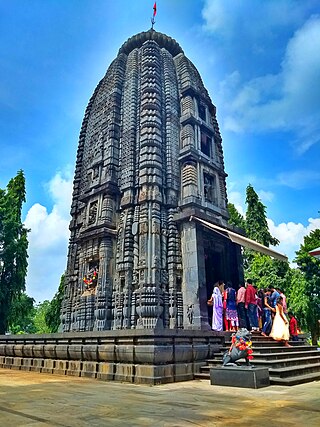
Mayurbhanj district is one of the 30 districts in the Odisha state of eastern India and the largest district in Odisha by area. The district's headquarters is located in Baripada, with other major towns including Rairangpur, Karanjia, and Bahalda. As of 2011, Mayurbhanj ranks as the third-most populous district in Odisha, following Ganjam and Cuttack.

Bastar state was a princely state in India during the British Raj. It was founded in the early 13th century by Annamaraja, a brother of the last ruler of the Kakatiya dynasty, Prataparudra II.

Dharakot is a semi-urban village and former zamindari estate in Dharakot Community Development Block of Ganjam district in the Indian state of Odisha.

Nilagiri State was one of the princely states of India during the British Raj. It belonged to the Orissa States Agency and its capital was at Raj Nilgiri, which later became the modern town of Nilagiri.

Kichakeshwari Temple is temple of Hindu Goddess Chamunda alias Kali located in Khiching, which was the ancient capital of the Bhanja rulers, located about 205 km from Balasore and 150 km from Baripada in the Mayurbhanj district of north Odisha, India.
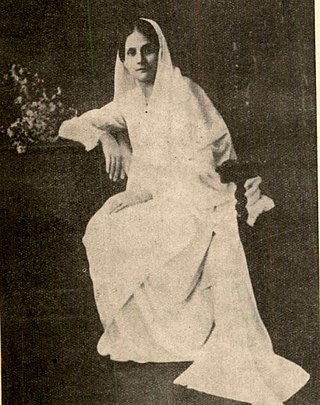
Her Highness Maharani Sucharu Devi was the Maharani of Mayurbhanj State, India.
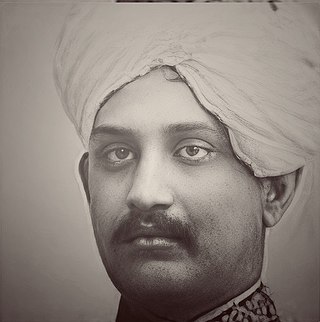
Maharaja Sri Rama Chandra Bhanja Deo was the Maharaja of Mayurbhanj State of India. Sc
Gorumahisani is a village and a railway station in Odisha, India. It is located in Rairangpur tahsil of Mayurbhanj district of Odisha, India. It is situated 17 km from Rairangpur and 100 km from district headquarter Baripada. The post office code of place is 757042.
Mayurbhanj Palace was the royal palace of Maharajas of Mayurbhanj, which was a princely state in British Raj. It is a heritage architectural monument and landmark of Baripada town, which was the erstwhile capital of the Mayurbhanj State.

The Bhanja dynasty is a dynasty that originated in the northern and central regions of modern Odisha before the Gupta Empire became an imperial power. The dynasty, of ancient local Kshatriya lineage as documented by Hermann Kulke, succeeded the Vindhyatabi branch of the Nagas of Padmavati, who ruled from the Keonjhar district of Odisha and included Satrubhanja of the Asanpat inscription. The Bhanj later became feudatories of the Bhauma-Kara dynasty.

Mayurbhanj State was one of the princely states of India during the British Raj. It was one of the largest states of the Eastern States Agency and one of the four salute states of the Orissa States Agency. The emblem of the state was two peacocks, for according to legend the ancestors of the rulers had originated from a peafowl's eyes.

Keonjhar State, also known as Keunjhar, was one of the princely states of India during the period of the British Raj. The second largest of the states of the Orissa States Agency, it was located in present-day Kendujhar district, Odisha.
Rupsa is a town of Balasore district in Odisha.
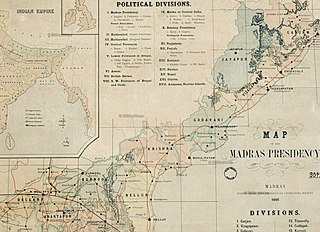
Jeypore Estate or Jeypore Zamindari was a Zamindari estate of the Madras Presidency and later of Orissa Province in British India. Historically it was a kingdom known as Jeypore Kingdom, located in the highlands of the western interiors of the Kalinga region that existed from the mid-15th century to 1777 CE. It was earlier a tributary state of the Gajapati Empire and following its decline in 1540, it gained sovereignty and later became a tributary state of the Qutb Shahis until 1671. The kingdom regained degrees of semi-independence until it became a vassal state of the British in 1777. It eventually formed a part of the linguistic Orissa Province in 1936 upon transfer from the Madras Province and became a part of the independent Union of India in 1947.
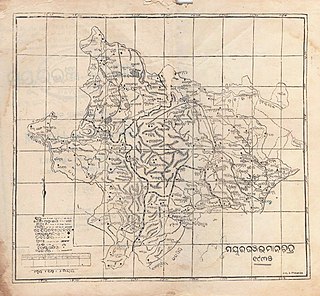
Kaptipada estate was one of the princely states of India during the period of the British Raj. It was located in eastern India and surrounded by Mayurbhanj state in north and west, Nilgiri state in east and Keonjhar state in south. The state was believed to founded by Naga Chief Phanimukuta during the rule of Gajapati ruler Kapileswar Dev about the middle of 15th century A.D.

Maharaja Purna Chandra Autonomous College is a public autonomous college located in Baripada, Odisha, India.
Royal Oasis in Wankaner, Gujarat, India, was the former summer residence of the erstwhile royal family of Wankaner. It now operates as a heritage hotel.

Mayurbhanj State Bank was a public sector bank that had its headquarters at Baripada, Odisha, India.
References
- 1 2 3 "Exclusive peek into Belgadia Palace Mayurbhanj : 200 year old renovated palace in Odisha opening January 2019 as a heritage boutique homestay - Bhubaneswar Buzz". DailyHunt. Retrieved 2018-12-29.
- ↑ Lobo, Joanna. "A royal renaissance". @businessline. Retrieved 2018-12-29.
- ↑ Bharadwaj, Chumki (March 8, 2019). "Passage royale". India Today. Retrieved 2019-07-15.
- ↑ "Heritage Luxury Stay in an Unfathomed Odisha". BW Hotelier. Retrieved 2019-07-18.
- ↑ "Mayurbhanj palace in shambles". news.webindia123.com. Archived from the original on 2018-12-15. Retrieved 2018-12-29.
- ↑ Dey, Panchali. "The royals of Odisha's Belgadia Palace open doors for tourists". Times of India Travel. Retrieved 2019-07-15.
- ↑ ""I Am Able To Check In With Myself" Mrinalika Bhanj Deo". magzter.com. Retrieved 2018-12-29.
- 1 2 "Heritage trail at Belgadia palace: An offbeat taste of royalty". The Week. Retrieved 2019-07-15.
- ↑ "Odisha: Live your own Princess Diaries dream at Belgadia Palace Hotel". Architectural Digest India. 2019-04-12. Retrieved 2019-07-15.
- 1 2 "The Belgadia Palace: Odisha's Hidden Jewel". Outlookindia.com.